Kit-Bashing 1907 (Phase 1) Boxcars in C&Sn3
Kit-Bashing 1907 (Phase 1) Boxcars in C&Sn3
|
This post was updated on .
 History: In 1902, the C&S began building their own narrow gauge freight cars, turning out 162 coal cars and 20 flat cars, both using ASF cast steel bolsters and ASF arch bar trucks. Then, just like that, narrow gauge car construction ceased for 5 years, other than the rebuilding of the Tiffany reefers in late 1902-1903. Beginning in the spring of 1907 the C&S shops embarked on a final narrow gauge car building program. By the fall of 1910, a total of 583 narrow gauge freight cars were constructed, in batches, with the technology and building components constantly evolving, giving rise to Harry Brunk's generalized three phases of the modern C&S freight cars. First up were 36 boxcars out shopped in June of 1907, the so called "phase 1" boxcars, numbered C&S 8067-8102. The box body was pretty much the same dimensionally as the 1898 boxcars purchased from St. Charles: 
The 1907 boxcars used the same ASF bolsters and arch bar trucks as the 1902 coal and flat cars. As the cast bolsters were designed for 12" side and center sills, they were adapted to the 9" sills of the 1907 boxcars by using 3"x5"x12" wood blocks on the side and center sills where the bolsters attached. The 1907 boxcars were the first freight cars to use a cast metal striker block above the coupler draft gear, rectangular in shape with multiple interior partitions. They were the first house cars to have running boards protrude well past the ends of the roof, with the strap metal supports used, as on all subsequent house cars. They were the first house cars to have the brake staff located well outboard of the center line, and the first freight cars to be lettered with the new block Gothic "C&S" monogram. Like the St. Charles boxcars, the 1907 boxcars, as built, used end truss rods on small queenposts. But the use of the wooden door railing guard boards was abandoned, despite the folio drawing. They were also the last "modern" C&S freight cars to use arch bar trucks, and the last to utilize the small NY air brake cylinder with the three brake lever arrangement between the needle beams. I know of only two photos of the 1907 boxcars in the first decade:  My favorite is of C&S 8070 spotted at the Central City depot, c.1909. Note the brake staff location, the cast buffer block, the end truss rods and the sparse grab iron locations. The only other photo is from a wreck scene in Trout Creek canyon c.1910, where C&S 8088 rolled over on its side: 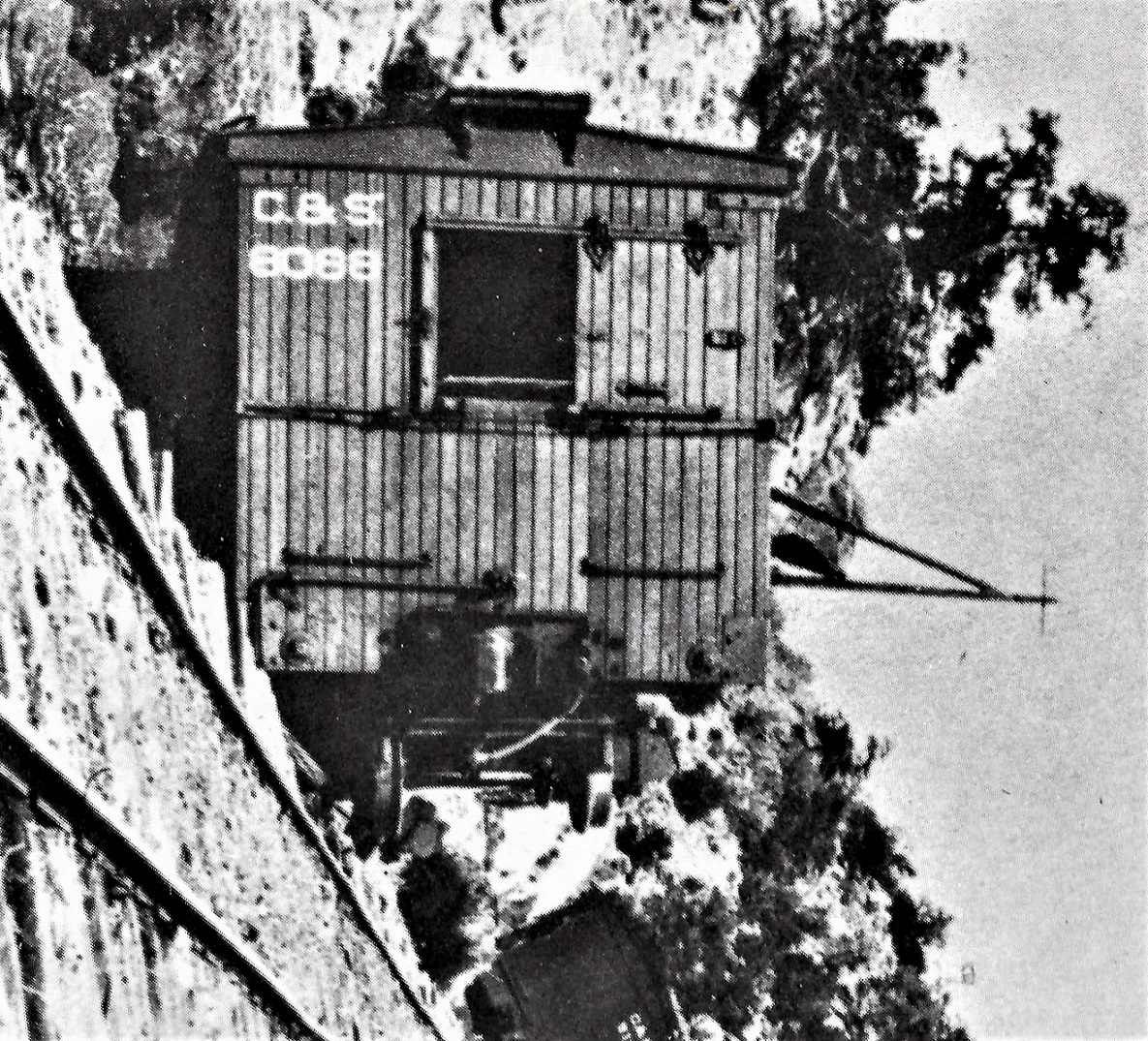 Note how short the A-end lumber door is, the railing well below the end fascia. Note that the A-end queen posts are integral to the lower door guides. The semicircular "fin" of the ASF bolster is seen as a shadow. Kit-bashing the 1907 boxcars: Back in the late 1990s, Berlyn produced injection molded kits for the C&S "phase 2" box, coal and stock cars. I purchased several of each. Examining the boxcar kit and comparing it to published plans by Harry Brunk and Derrell Poole, it occurred to me that the phase 1 boxcars could probably be modeled by substituting a wood roof for the narrow tab Murphy roof supplied with the phase 2 boxcar kit--the phase 2 boxcars were only 1.5" taller (rail top to running board top) than the phase 1 boxcars. So I put away three kits in the closet destined for kit-bashing. So, why did it take 25 years to complete the project? Even I don't work that slowly! Four major problems had to be solved: 1. Correct ASF arch bar truck--problem solve in about 2004 when the Cimarron Works produced the correct ASF 4' wheel base trucks, I purchased10 pair and added them to the stash in the closet. These Sn3 trucks are now offered by P.V.C. 2. Correct cast metal couple buffer blocks. Berlyn's phase 2 stock car kit had a similar cast buffer block on the stock car end pieces, but I couldn't justify buying 3 stock car kits, at $40.00 each, just to harvest these small parts. Then, about 2015, a listing on eBay popped up for a lot of cast off Berlyn stock car sides and end, which I purchased and added to the stash of parts in the closet. 3. Those little queen posts for the car end truss rods. A couple of years ago, Bill Meredith's Leadville Designs produced the AC&F 1900 stock cars, as built. The end truss rod queen posts were included in a resin 3-D print of door hardware. I purchase 10 sets for this and other projects. 4. Finally, those ASF cast bolsters. I had scratch built a pair back in the late 1980s (still have PTSD from the experience). Luckily, our own Steve Guty came to the rescue by printing me a batch of ASF bolsters in S scale: 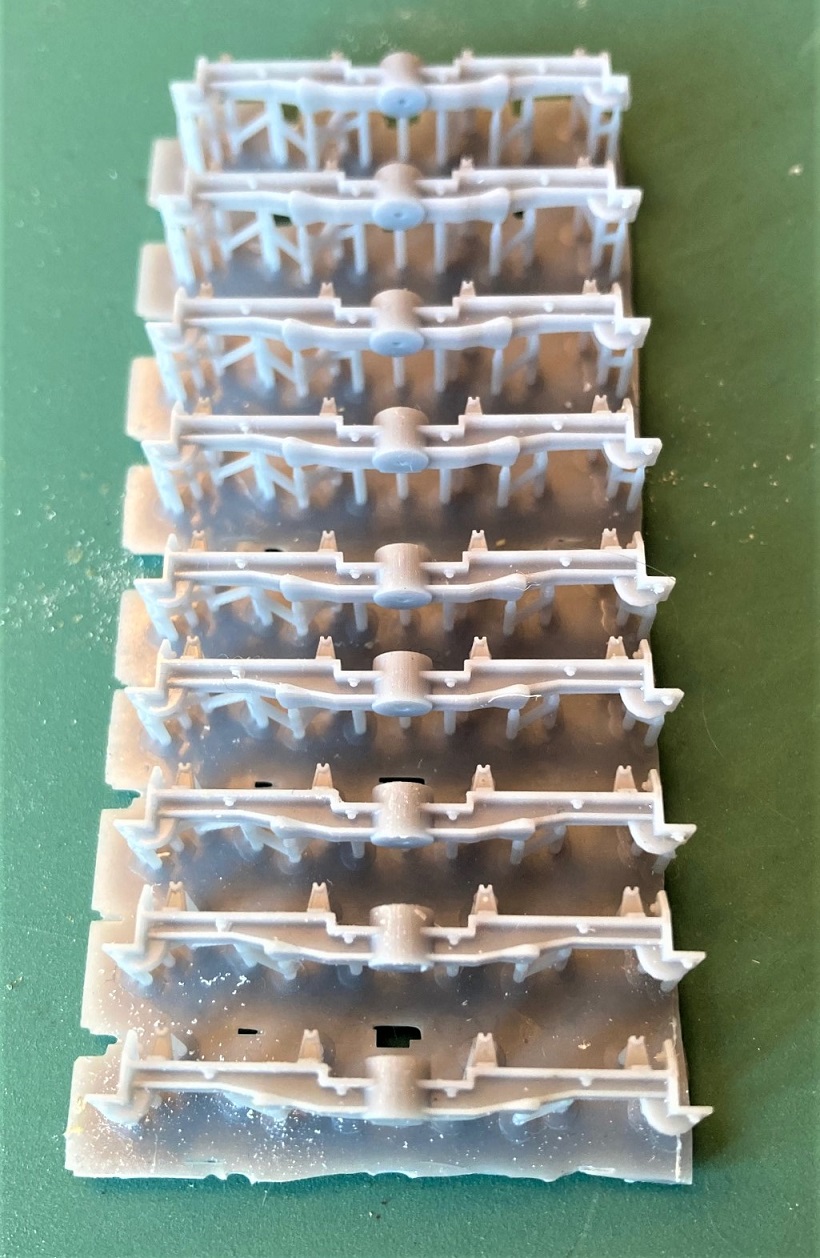 With all needed parts now on hand, construction of three 1907 boxcars began in January 2022. First up were end modifications: 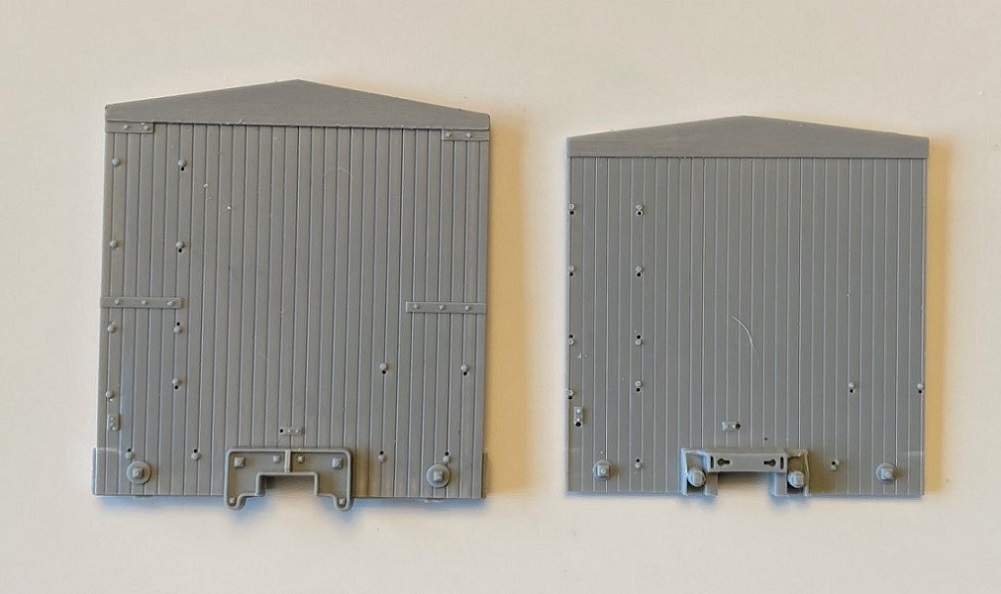 Berlyn stock car end on the left, box car end on the right. The stock car end is much taller than the boxcar end, so substitution wasn't possible. I ended up cutting out the stock car buffer blocks, filing them to the correct depth, then grafting them onto the boxcar end after the phase 2 buffer block had been carved off: 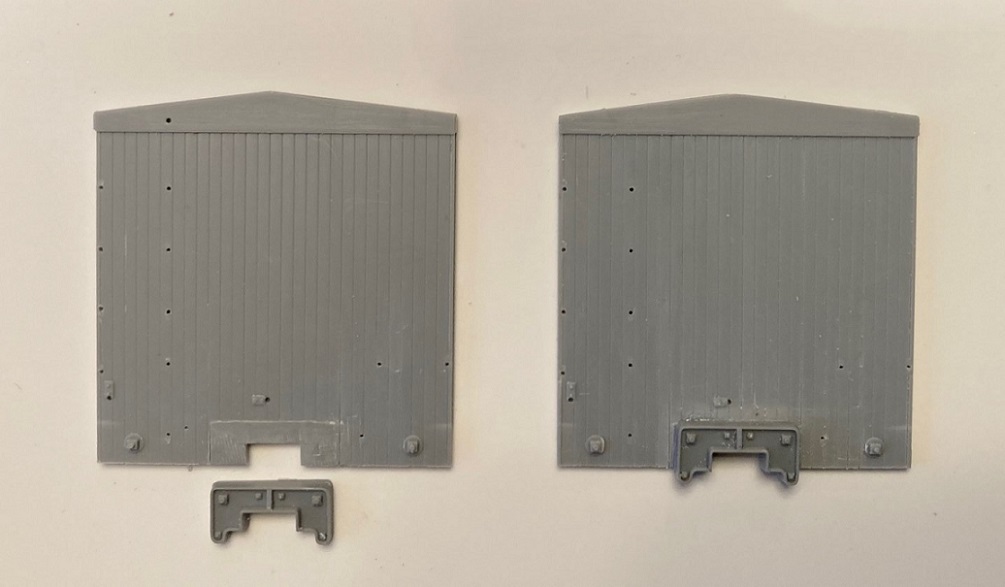 Bits and pieces of styrene were added to approximate the interior partitions per the plans on hand. All grab iron holes were filled with 0.015" Plastruct rod and cast on grab iron bolts removed. New grab iron holes were then drilled and the basic body and frame were assembled. 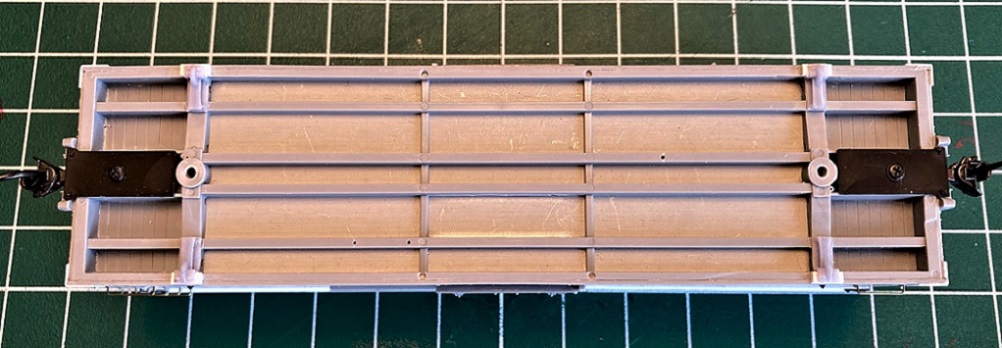 I couldn't use Steve's ASF bolsters as printed, as Berlyn had rearranged the intermediate and center sill locations on the car frame, to allow for greater truck clearance. There was no way to make Steve's bolsters fit. So, I cut off the visible ends of the bolster and with styrene 3'x5' spacer blocks added to the frame, glued the bolster ends in place. With the trucks mounted, the fact that the middle of the bolster is missing is not visible: 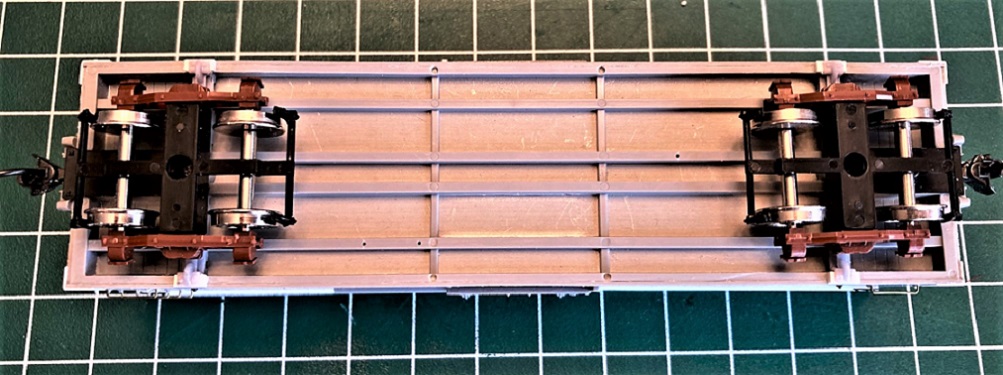  Styrene strip was used to correct the fascia per the drawings, new first decade grab irons and stirrups were fabricated. A new "wood" roof was constructed from Evergreen scribed styrene. Roof walks were from PBL stock cars in my parts box. Finally the end queen posts were trimmed from Bill's print and applied. Note that the end door from the Berlyn phase 2 boxcar kit is incorrect, much too short, but is perfect for the phase 1 boxcar:  The last details to be applied were the end truss rods, bent from 0.010" wire on a jig. Then off to the paint shop. Two cars were lettered for my 1909 roster with San Juan decals: 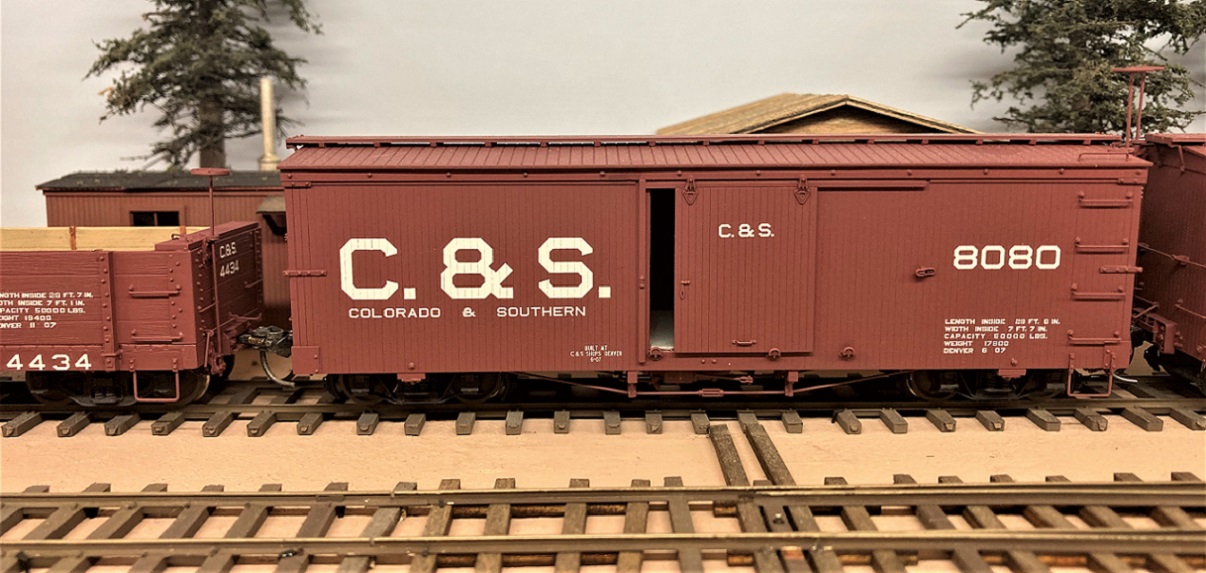   The 1907 "phase 1" boxcars are often confused with the 1898 St. Charles phase 0 boxcars. Here is a C&Sn3 comparison:  Second 1898 order St. Charles boxcar on the left, in delivery lettering scheme. The car body was kit-bashed from and Overland (now PBL) phase 3, SUF boxcar kit. Rick Steele was kind enough to print me S scale decal sets from his LaBelle HO scale art work. Both cars are similar in dimensions, the phase 1 car less than 2 inches taller to top of running board. Both have 4' wheel base arch bar trucks, though of different design. I built up a third car with all of the USSA hardware for my 1924 roster and numbered it 8072. C&S 8072 ended up as one of the Miller cars, going to the RGS in 1938, renumbered as RGS 8512. It had its photo take in 1939 at Bilk: 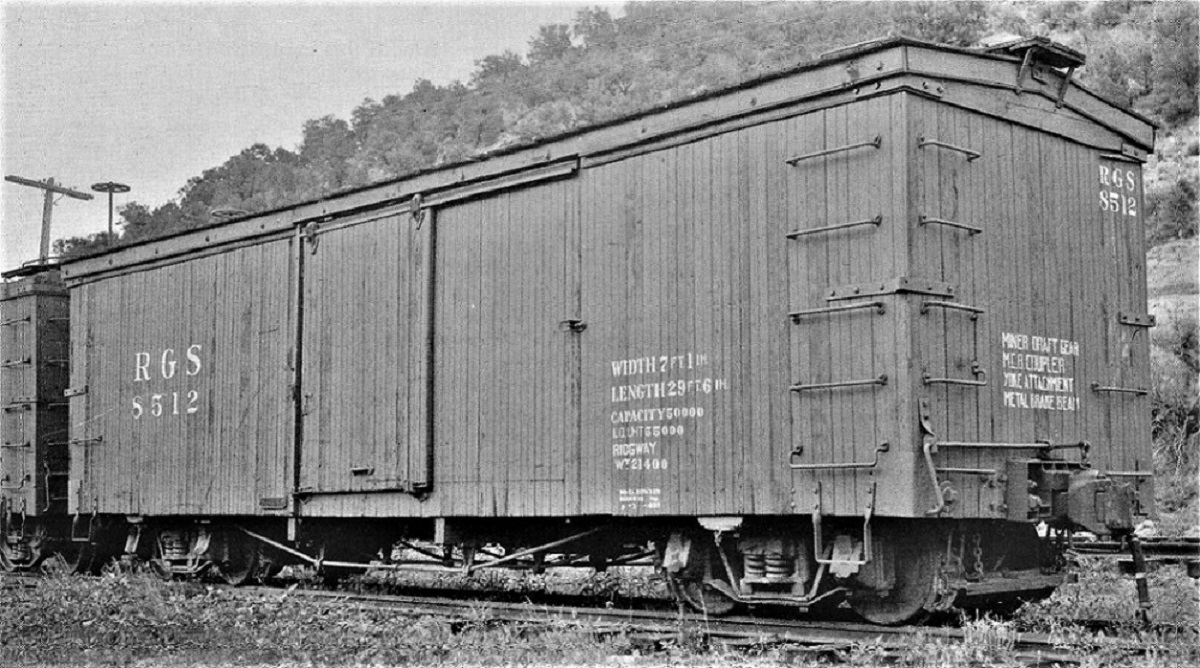 Not that during the USSA shopping of c.1916, both the end truss rods and the small A-end lumber door were removed. End doors were removed from many, but not all, of the C&S boxcars, of all four phases. Note also how the side and end fascia has been modified, wider that as-built, notched for the side door rail. My Sn3 version, still needing weathering:   The 1907 boxcar building ended after only 36 cars were built. Perhaps the C&S shops had used up all the ASF bolsters on hand or maybe the Bettendorf salesman had secured a contract for that firm's cast bolsters and cast side frame trucks. When boxcar building resumed in the fall of 1907, the phase 2 boxcars were introduced. Here is a 1924 C&Sn3 comparison of the two boxcar types;  Phase 2 C&S boxcar 8129 has cast Bettendorf trucks, a narrow rib Murphey metal roof and wooden lateral running boards. Per the folio drawing, it is only 1.5 inches taller to top of running boards than the phase 1 boxcar. Whew, a much longer post than planned. As an afterthought, I'm not certain, but it may be possible to do the same kitbash of 1907 boxcars in On3: San Juan Models offers kits for both the phase 2 boxcar and stock car and offers the correct phase 1 ASF arch bar trucks. Perhaps you On3 builders could convince Bob Stears to sell you some stock car ends for the correct cast buffer blocks. And Steve Guty sent me an O scale print of his ASF bolster with my S sale prints--it's even nicer then the S scale version. Sorry, but you HOn3 guys are going to have to resort to scratch building if you want a 1907 boxcar--at least Steve has the correct bolsters!! Or modifying Bill Meredith's HOn3 version of the "AC&F" type-1 boxcars, although they more closely resemble the St. Charles boxcars . . .
Jim Courtney
Poulsbo, WA |
Re: Kit-Bashing 1907 (Phase 1) Boxcars in C&Sn3
|
Administrator
|
Beautiful and inspiring work. Jim! Thanks for sharing how you did this.
|
Re: Kit-Bashing 1907 (Phase 1) Boxcars in C&Sn3
|
In reply to this post by Jim Courtney
Very nice Jim!!!
Thanks for sharing all your knowledge and experience building these cars. I can certainly use one in Sn3 as the RGS Miller car. I might also have to do one in On3 in as built configuration too. Best, Todd |
«
Return to C&Sng Discussion Forum
|
1 view|%1 views
| Free forum by Nabble | Edit this page |

